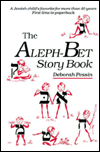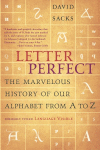The third letter of the Hebrew alphabet is gimmel - גימל. The sound of gimmel - "G" is strongly related to the "K" sound. David Sacks writes in Letter Perfect , that:
, that:
No two letters of the alphabet are closer than C and G, fraternal twins in shape and sound. Settle your tongue and make the sound "k", which shoves air along the rear roof of your mouth (the velum, or soft palate). Leave your tongue in place, but this time start from your vocal cords: "g". Thus C (or K) is the unvoiced velar stop; G is the voiced velar stop. The kinship can be heard in the word "scorn," which would be pronounced much the same if spelled "sgorn." (Another example: On your next memo to your boss, try writing across the top "As we disgust.")
In Hebrew we see the same connection.
Gimmel alternates with
kaf and
kuf (
qof) -
This also helps to explain why C became the third letter in English, instead of G. The Greeks converted
gimmel into
gamma, but the Etruscans who borrowed the writing from the Greeks, had no G sound. The nearest sound was "k" and so they turned
gamma into "C". Later, the Romans needed a letter for the G sound, and created the letter "G".
We see another G/C connection in the origin of the letter
gimmel as well. Gimmel is related to Hebrew
gamal גמל - which became
kamelos in Greek and later camel in English.
There are scholars who believe that the shape of gimmel is not the "camel's neck", but refers to a hunter's "throwing stick". However, unlike some of the other letter changes (
dag to
delet,
nahash to
nun), I'm not familiar with a Hebrew word that relates to
gaml as "throwing stick". But maybe a reader will be able to help us out.
The root גמל has three meanings. As mentioned it can refer to a camel -
gamal. It can mean "to wean" or "to ripen" - גמילה in modern Hebrew refers to recovering from an addiction, and in this weeks parasha (Korach) we have the phrase (BaMidbar 17:23): וַיִּגְמֹל שְׁקֵדִים - "almonds were ripening". And the third meaning is "to pay, reward, recompense". From here we get the blessing "
HaGomel" - הגומל לחייבים טובות - God rewards the guilty with favors. Also from this meaning comes the term
gemilut chasadim גמילות חסדים - often translated as "acts of loving-kindness". (This reminds me of a joke I heard as a kid: "Q: What did the robbers say to the group of Habadniks? A: Gimme loot, chasidim!")
Klein does not find a connection between the meanings. The meanings for camel and payment have parallel words in other Semitic languages and do not derive from any earlier word. The meaning of "to ripen, to wean", according to Klein, is related to the root גמר - "to be complete".
Kaddari connects both verbs to the concept "to be complete". In Hebrew it makes more sense, and he writes that the root means: היה שלם, השלים, שילם - "was complete, completed, paid". Steinberg also connects גמל to שלם (and maybe influenced Kaddari, although I don't see any references to Steinberg in Kaddari's new dictionary), and connects the verb to "camel" as well. He says that one of the meanings of the verb גמל is "to put into actions one's plans (Yeshaya 3:9, Tehilim 137:8)." And therefore it is connected to the nature of the camel, who is always ready to serve.
Jastrow
has a different theory. He says all the meanings of גמל are related "to tie, couple, load". So to pay is "to load (good or evil) on". And the camel is a "carrier of loads".
One last explanation comes from Rav Hirsch - he says a
gamal is so called because it is as if it is weaned from water.
writes:



